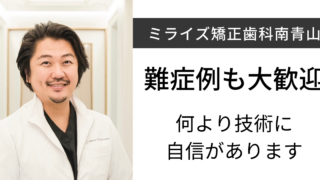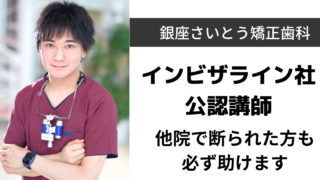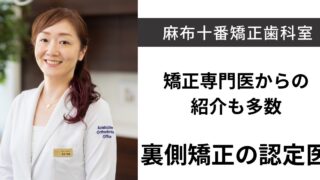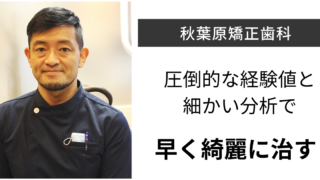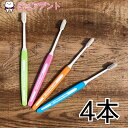![Toothbrush Replacement Timing] Because it's something you use every day, you need to know the right way and timing to replace your toothbrush.](https://365dentist.jp/wp-content/uploads/2024/02/歯ブラシ dental-care-4528583_1280.jpg)
Toothbrush Replacement Timing] Because it's something you use every day, you need to know the right way and timing to replace your toothbrush.
How and why it's time to replace your toothbrush

Toothbrush replacement time
It is important to know how to use a toothbrush correctly because it is used every day. How long do you replace your toothbrush?toothbrushis used daily with the proper amount of force.Replace one bottle every 1 to 1.5 monthsIt is desirable to do so.
Toothbrush replacement guidelines
In addition to replacing toothbrushes based on the "time of year" (1 to 1.5 months), toothbrushes should also be replaced depending on their "condition. If you brush with the proper amount of force, the bristles will usually maintain their shape for one to one and a half months. However, if the toothbrush is not used in the proper way or with the proper amount of force, the bristles will spread out earlier. When viewed from the back of the toothbrushIf the tips of the hair appear to be popping out to the left or right, replace them.is required.
Why toothbrushes need to be replaced
Difficult to remove dirt
The tips of the bristles of the toothbrush can break off or decrease in number.Stain removal effectiveness is halved.Do.
Gums are more easily damaged.
Toothbrush bristles lose elasticity as they spread.Damage to teeth and gums.There is a risk of
Dirt and bacteria adherence
There are many bacteria in the oral cavity. Cleaning themFungi adherent to toothbrushesThe bacteria are. Bacteria multiply more easily when wet, so even if you wash the tips of your toothbrush after brushing, it will not completely kill the bacteria. Therefore, if you do not replace your toothbrush after a certain period of time, you are swallowing bacteria with your toothbrush every day. To brush hygienically,Requires periodic replacementIt is.
How to choose a toothbrush

Periodontal disease occurs when gum disease bacteria enter and increase in the periodontal pockets, the gaps between the teeth and gums. Choosing a toothbrush that can effectively scrape dirt out of periodontal pockets will help protect your teeth from the foundation of the disease. Knowing the proper size and hardness of the bristles will also increase the effectiveness of plaque removal and prevent cavities.
hardness of hair
Toothbrush bristles come in three hardnesses: "hard," "regular" and "soft. The "regular" hardness is the most suitable for most people.
If you are only thinking about removing stains, isn't "hard" the best? However, in fact, brushing with a hard toothbrush requires a high level of technical skill. Because the hard bristles can damage the gums and scrape off the root of the teeth, no matter how gently you brush. This causes the gums to fall. This can expose the roots of the teeth and cause tooth decay and sensitivity.
On the other hand, "soft" bristles are less likely to damage the gums. The bristles are suitable for people with swollen gums or those with severe gum disease who bleed easily, but because the bristles are flexible, they spread quickly if brushed with a lot of force. In order to remove stains thoroughly, it is necessary to take a little longer time and brush carefully with gentle force.
Head size
Generally, a smaller compact size with three vertical rows of bristles is appropriate. If the head is too large, it is difficult for the tip of the bristles to reach the back teeth and other fine areas, resulting in a lot of leftover polish. Especially for women, many of them have small oral cavities, so the size of the head should be smaller than indicated.High cleaning effectiveness by choosing a smaller sizeThe following is a list of the most common types of products that can be obtained.
hair ends
In general, three different shapes are commercially available.
Round
Slightly rounded tips
Horizontal (Cylinder)
The tips of the hair are cut flat.
Those who are suited for circular (round) or horizontal (cylinder)
Circular and horizontalis easy to follow along the tooth surface and efficiently removes plaque. Therefore, it is highly effective in preventing tooth decay.Adults and children who are prone to cavitiesThe shape is recommended for
tapered
Characterized by fine hair tips
Those who are suited for tapered
taperedis shaped to be more effective in cleaning the border between teeth and gums because of its thinner bristle tips. Therefore,Swollen or bleeding gumsInhibition of the progression ofperiodontal disease preventionThe following are some of the benefits that can be expected
Shape of handle (handle)
The general shape of the handle is straight. Some are spring-loaded with elasticity, and some are slightly curved. These are designed to make it easier to brush back teeth. Some have various functions, but we recommend that you start with a standard one to learn how to brush your teeth properly. Then, depending on your personal preference, you can choose the one that best suits your needs.Fits and polishes with no extra effort.The best way is to choose the best one.
Proper storage of toothbrushes

How do you care for and store your toothbrush after brushing your teeth? Toothbrushes are supposed to protect your oral hygiene, but if you make mistakes in the way you care for and store your toothbrush, bacteria can grow and it can become very unhygienic. Here we will explain the NG behaviors of toothbrush storage and the correct way to store them.
put the tips of one's hair down into a cup
left on the tip of the toothbrush bristles.Bacterial growth due to moistureIt is easier to When storing,Store in an upright position with hair ends facing up.Let's do it.The following is a list of the most common problems with the
I cap my toothbrush.
You're wearing a cap.Moisture builds up in the cap, increasing the growth of bacteriaDo. If you are using it at work, you may have to cap it. In such cases, use a dry towel or kitchen paper to absorb the moisture thoroughly before capping. If you can bring it home, we recommend that you remove the cap after returning home and let it dry naturally in a well-ventilated place.Caps are not worn when not carrying.Make sure to do so.
Wash brushes in a cup.
Washing a toothbrush with accumulated water means,Toothbrush immersed in germ-free water.This is a good thing. This will not remove germs. When washing toothbrushes,Strong running waterWash thoroughly with
Store in a unit bathroom or storage cabinet.
Toilet and bath in one.prefabricated bathImmediately stop anyone from placing toothbrushes in the The unit bath isMoisture from the bathare many,poorly ventilatedAbove.Toilet germsis drifting in the air. In such spaces, bacteria can attach to wet toothbrushes and multiply. There is a risk of food poisoning from Salmonella and E. coli, and pneumonia from Legionella and resistant Staphylococcus aureus.Store toothbrushes in a well-ventilated area.Let's do it.
Store multiple toothbrushes together.
Toothbrushes touch each otherand germs are transmitted to each other. especially by storing adult and child toothbrushes together,Danger of bacterial infection.will increase. To protect your child's teeth, store toothbrushes carefully so that they do not stick together.
Do not change toothbrushes
Toothbrush is,The longer you use it, the more germs you will have.. Hygienic and functional.Replace once a month.It is ideal to
Disinfection by boiling water
Feeding bottles, etc.sterilization by boiling waterI am sure you may be thinking, "Wouldn't a splash of boiling water clean my toothbrush? You may be thinking, "Well, I'm not sure. However, this is not the case,Hot water disinfection is not suitable for toothbrushesThe temperature of the bristles of many toothbrushes is only 80 degrees Celsius. This is because the bristles of most toothbrushes are made of heat-sensitive materials such as nylon and polyester, with a heat resistance temperature of 80 degrees Celsius. Hot water will cause the bristles to spread and become damaged, which will result in poor stickiness. Deterioration of hair endsIt is advisable to avoid disinfecting toothbrushes with boiling water to prevent
disinfection by chemical solution
It kills germs on cutting boards and dishcloths.bleaching agentin the kitchen. However, these chemicals are only for kitchen utensils.powerful medicineSo to disinfect your toothbrushNever use.Be very careful to avoid the use of a "no" or "no" in the first place.
Dirt is left at the base of the toothbrush.
The base of the toothbrush is difficult to clean.Location. If you only rinse lightly, some food debris may remain. Therefore, use your fingers tothoroughly rubbing and washingIt is necessary to Stains that are difficult to remove areUse of an interdental brush is helpful.It is. This way, both the interdental brush and the toothbrush will be clean.
summary

Toothbrushes are used every day, which is why proper storage and timing of replacement is important. Because,Toothbrush is unsanitaryby becoming,Causes of unexpected illnesses and disordersThis is because it can be Please refer to this content for more information.Compatible toothbrushesand then selectReplacement at the best timePlease use this as a guide for doing the following.
Related article: "Toothbrush (manual and electric toothbrush) recommendation ranking! We also teach you how to choose one!"
365dentist General Supervisor Dentist/Yukiko
Graduated from Nagasaki University School of Dentistry, ~2018 Kyushu Medical Center, 2018-present Working at a dental clinic in TokyoSupervisor: Dentist/Naomi
After completing clinical training, worked in cosmetic dentistry in Tokyo. Currently dentist/writer.



